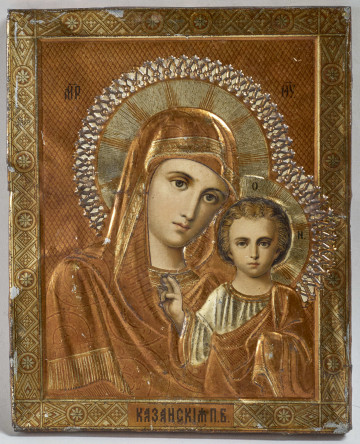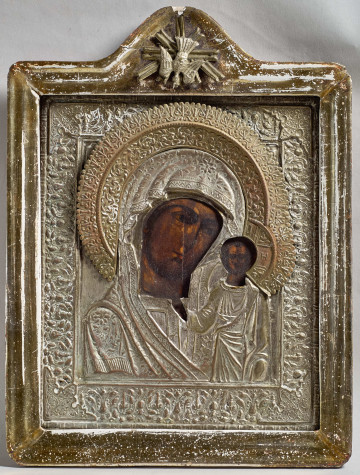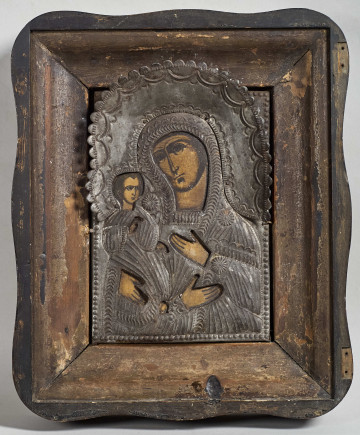
The Mother of God of Kazan, Hodegetria
koniec XIX w.
Castle Museum in Łańcut
Part of the collection: Ikony
The oldest image of the Mother of God of Smolensk was likely a copy of an icon from Constantinople, brought to Ruthenia in 1046 and transferred from Chernihiv to Smolensk in 1095. It became a testament to the close ties between the Rurik dynasty and Byzantium. In the late 14th century, the Principality of Smolensk fell under the control of the Grand Duchy of Lithuania. In 1398, Prince Vytautas, when marrying off his daughter Sophia to the Moscow prince Vasily, gifted her the Smolensk Hodegetria icon. Another account claims that the last prince of Smolensk, fleeing from Vytautas in 1404, took the icon to Moscow. In 1456, after a copy was made for the Annunciation Cathedral in Moscow, the original was returned to Smolensk. From then on, the icon, recognised as the protector of the western frontiers of Ruthenia, has been called the Smolensk icon. It continues to hold great reverence among Russian Orthodox believers. During Napoleon's invasion of Russia, the icon was taken to Yaroslavl. After the French forces retreated, it returned to Smolensk. The Moscow copy of the Smolensk icon from 1456 was safeguarded in Vologda in 1812. Meanwhile, a copy from 1602, placed in the gate church of the Smolensk Kremlin, was taken by the retreating Russian forces from the burning city of Smolensk.
Carried in processions and military parades, beginning with the Battle of Borodino, the icon travelled with the Russian army across Europe, all the way to Paris, before returning to Smolensk. Despite the persecution of the Russian Orthodox Church following the 1917 revolution and the destruction or closure of many churches, all three of the oldest Smolensk Hodegetria icons survived the worst period until World War II. The oldest Smolensk icon was found in the closed Dormition Cathedral by the Germans who entered Smolensk in 1941. Unfortunately, after the Germans were driven out, the icon had disappeared, and its fate remains a mystery to this day.
Teresa Bagińska-Żurawska https://orcid.org/0000-0002-9243-3967
Author / creator
Object type
ikony
Technique
tempera, metaloplastyka
Material
wood, chalk, distemper, silver, pearl
Creation time / dating
Creation / finding place
Owner
Muzeum - Zamek w Łańcucie
Identification number
Location / status

koniec XIX w.
Castle Museum in Łańcut

koniec XIX w.
Castle Museum in Łańcut

20th century
Castle Museum in Łańcut
DISCOVER this TOPIC
Museum of King Jan III's Palace at Wilanów
DISCOVER this PATH
Educational path